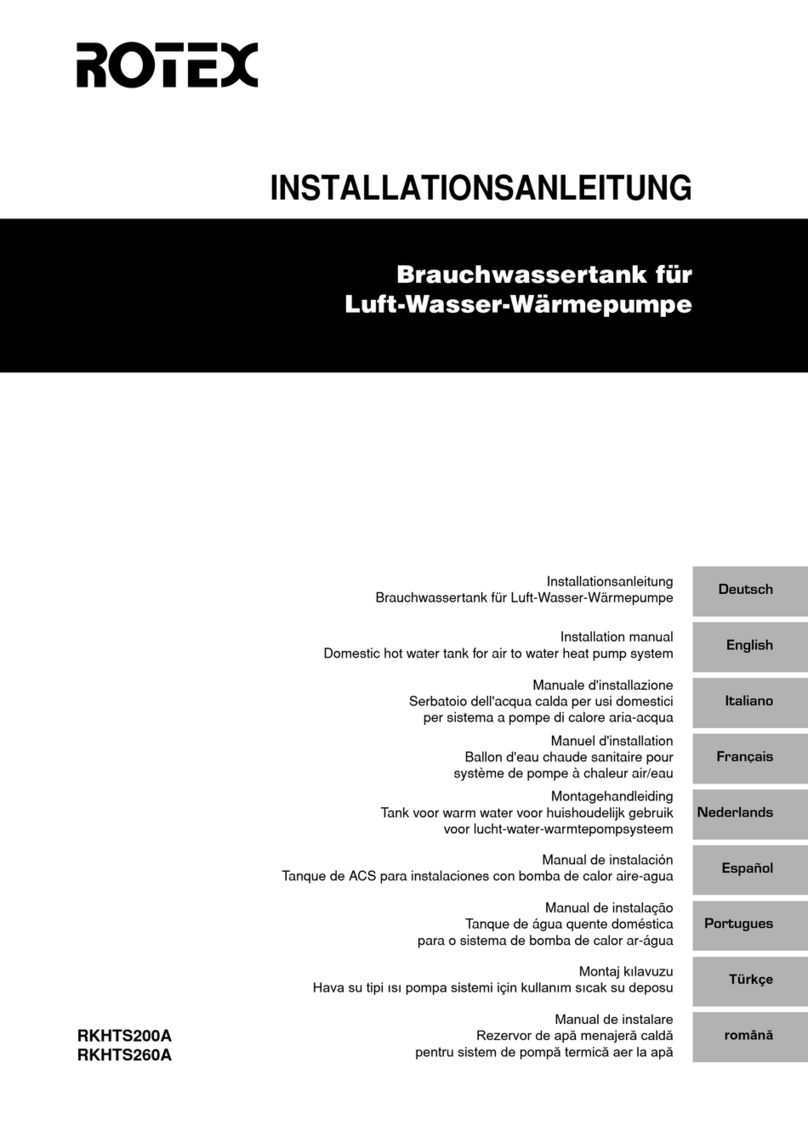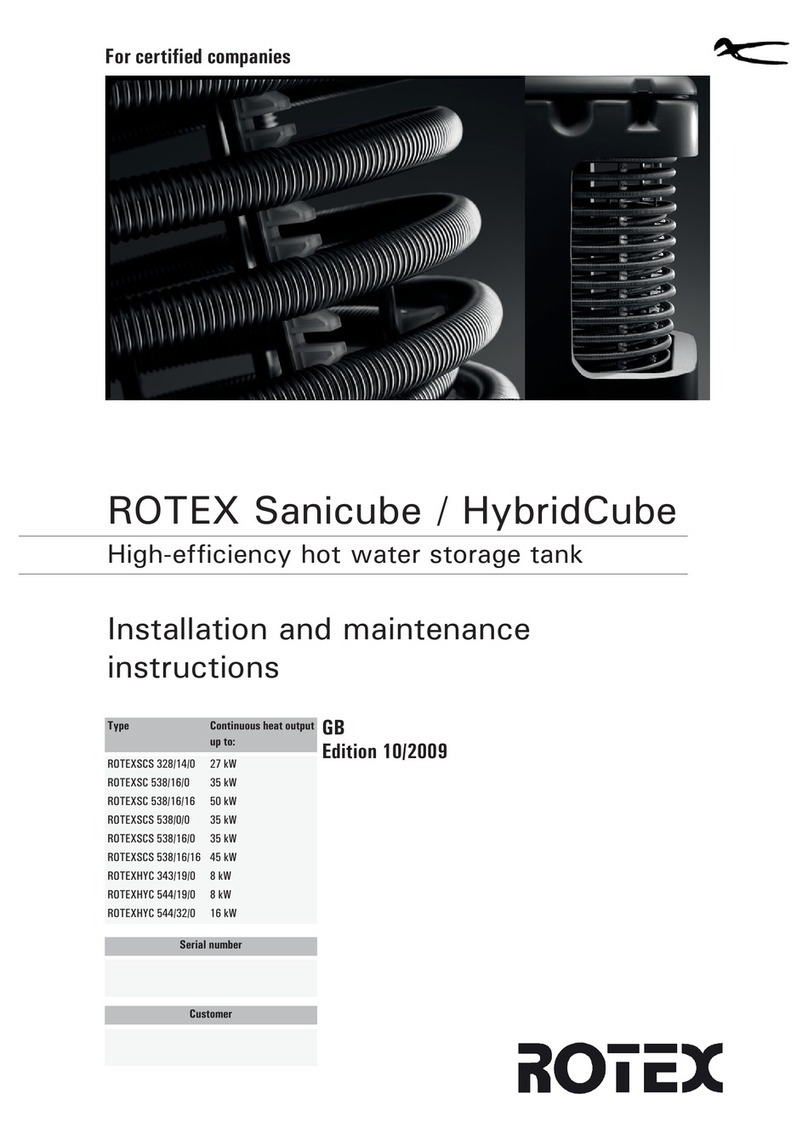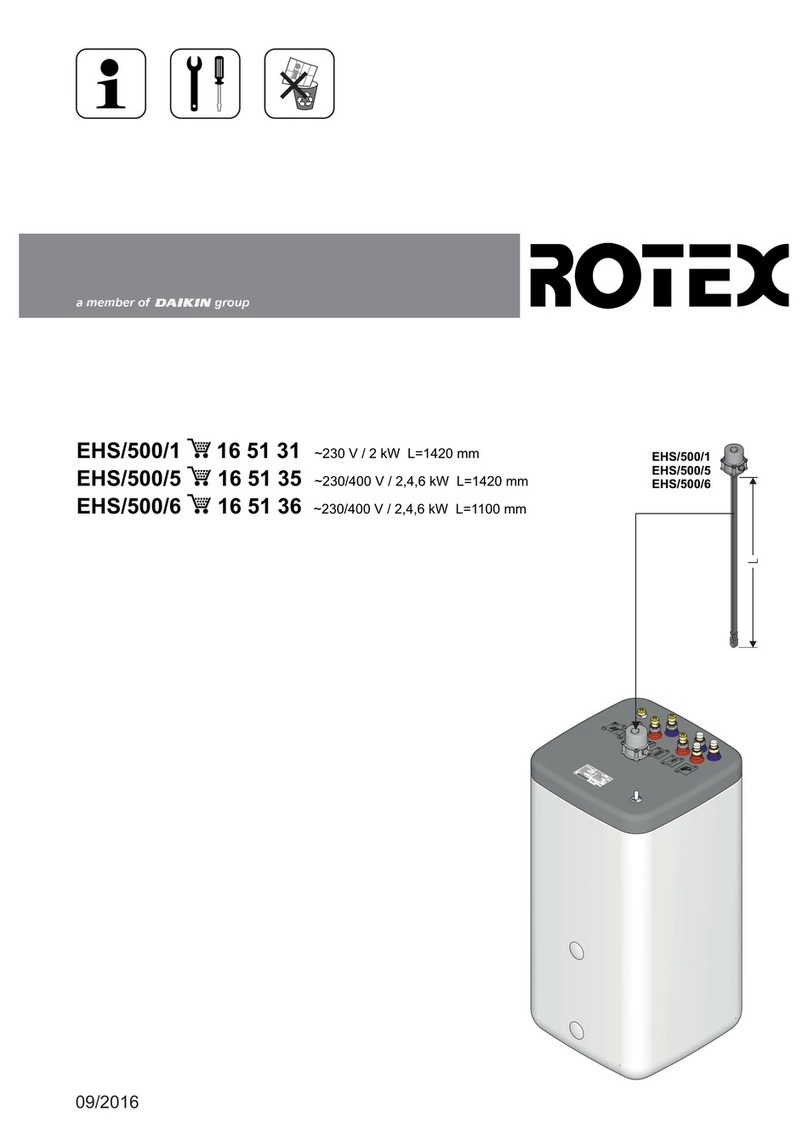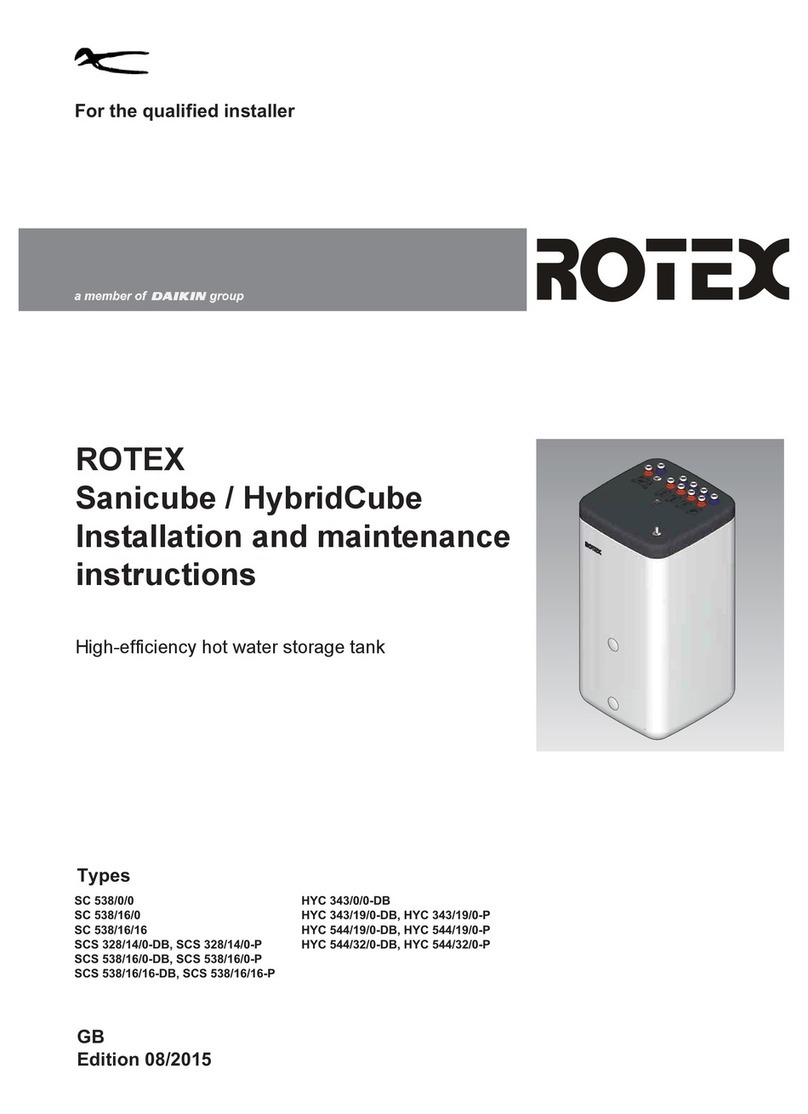2xSafety
FA ROTEX SC / SCS / HYC - 02/2013 5
2.4 Proper use
The ROTEX Sanicube / HybridCube may only be used as a hot
water storage tank. The ROTEX Sanicube / HybridCube must be
installed, connected and operated only according to the infor-
mation in this manual.
When connecting to a ROTEX heat pump you must use only the
storage tank connection kits (E-PAC) provided for the purpose.
ROTEX Only those electric immersion heaters supplied by
ROTEX may be used.
Any other use outside the intended use is considered as
improper. The operator alone shall bear responsibility for any
resulting damage.
Use as intended also involves compliance with maintenance and
inspection conditions. Spare parts must at least satisfy the
technical requirements defined by the manufacturer. This is the
case, for example, with the use of original replacement parts.
2.5 Instructions for operating safety
2.5.1 Before working on the hot water storage tank
and the heating system
ƔWork on the hot water storage tank and heating system (e.g.
installation, connection and initial start-up) should only be
carried out by authorised and trained heating experts.
ƔSwitch off the main switch before starting any work on the
domestic hot water storage tank and heating system and
secure it against unintentional switch-on.
ƔSeals must not be damaged or removed.
ƔMake sure that the safety valves comply with the require-
ments of EN 12828 when connecting on the heating side, and
with the requirements of EN 12897 when connecting on the
domestic water side.
2.5.2 Electrical installation of optional accessories
ƔBefore beginning work on live parts, disconnect them from the
power supply (switch off main switch, remove fuse) and
secure against unintentional restart.
ƔElectrical installations may only be carried out by qualified
electrical technicians under observance of the relevant
electrical guidelines and the regulations of the electric utilities
company.
ƔFor each hardwired power connection, install a separate
disconnector system compliant with EN 60335-1 for all-pole
disconnection from the power mains.
ƔCompare the mains voltage indicated on the nameplate with
the supply voltage before connecting to the mains.
2.5.3 Installation room
For safe and fault-free operation, it is necessary that the instal-
lation location of the ROTEX Sanicube / HybridCube fulfils
certain criteria. Information about the installation location for the
high-performance hot water storage tank can be found in High-
efficiency hot water storage tank chapter 4 "Set-up and instal-
lation".
Information on the installation site of other components can be
found in the associated documentation supplied with them.
2.5.4 Requirements of the heating and filling water
Avoid damages caused by deposits and corrosion: Observe
the current technological regulations to prevent corrosion
products and deposits.
Measures for desalination, softening or hardness stabilization are
necessary, if the filling and top-up water have a high total
hardness (>3 mmol/l - sum of the calcium and magnesium
concentrations, calculated as calcium carbonate).
2.5.5 Heating and sanitary side connection
ƔCreate a heating system according to the safety requirements
of EN 12828.
ƔWith sanitary connection, you must observe;
– EN 1717 - Protection of domestic water from contamina-
tion in domestic water installations and general require-
ments concerning safety equipment for the prevention of
domestic water contamination by back-flow
– EN 806 - Technical regulations for domestic water instal-
lations (TRWI)
– and, in addition, the country-specific legal regulations.
ƔDuring operation of the ROTEX Sanicube / HybridCube in
combination with the solar energy exploitation, the hot water
temperature can exceed 60°C. Scalding protection needs to
be included when you install the system (domestic hot water
mixing device e.g. VTA32, 15 60 16).
ƔUse a pressure reducer if the cold water connection pressure
>6 bar.
2.5.6 Operation
ƔOnly operate the ROTEX Sanicube / HybridCube;
– After all installation and connection work has been com-
pleted.
– With fully installed equipment covers and service
accesses.
– With sanitary side pressure reducers installed
(max. 6 bar).
– With heating side pressure reducers installed
(max. 3 bar).
– With completely filled storage containers (fill level dis-
play).
The specified servicing intervals should be adhered to and
inspection work must be carried out.
2.5.7 Instructing the user/owner
ƔBefore you hand over the heating system and the hot water
storage tank, explain to the owner how he/she can operate
and check the heating system.
ƔHand over the technical documentation (this document and
all supporting documents) to the user and advise him that
these documents must be made available at all times and be
stored in the immediate vicinity of the unit.
ƔDocument the hand-over by filling in and signing the checklist
in chapter 5.1 "Start-up", together with the operator.
2.5.8 Documentation
The technical documentation included in the scope of supply is a
constituent part of the equipment. It must be stored in such a way
that it can be consulted at any time by the operator or the techni-
cians.
































